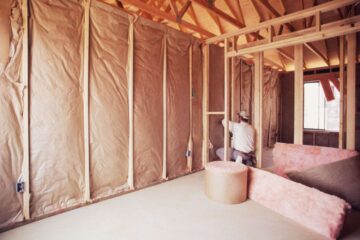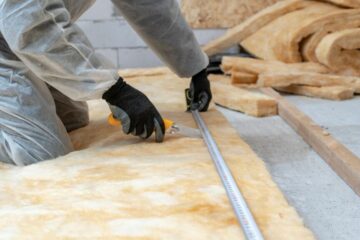The evolution of glass wool insulation represents a significant advancement in building technology, combining exceptional performance characteristics with strong environmental credentials. Manufactured primarily from recycled glass materials, this innovative insulation solution has become integral to sustainable construction practices worldwide, offering benefits that extend far beyond basic thermal protection.
Modern production techniques transform recycled glass into an intricate matrix of fine fibers through a precision spinning process. This creates a material containing millions of tiny air pockets that deliver outstanding thermal resistance, with R-values typically ranging from R-3.1 to R-4.3 per inch. The advanced fiber structure effectively minimizes heat transfer in all forms—conduction, convection, and radiation—enabling buildings to maintain comfortable interior temperatures while dramatically reducing energy consumption. Studies show properly installed glass wool insulation can decrease heating and cooling costs by 40-50%, making it an economically sound investment that pays for itself through energy savings.
The acoustic performance of glass wool is equally impressive, with noise reduction coefficients reaching up to 1.0 across critical frequency ranges. The material’s unique fibrous composition absorbs sound energy through friction and vibration damping, significantly reducing both airborne noise transmission and impact sounds. This makes it particularly valuable for projects requiring superior acoustic control, including educational facilities, healthcare buildings, and multi-family residential developments where noise mitigation directly impacts occupant comfort and wellbeing.
Fire safety represents another crucial advantage, as glass wool’s inorganic composition provides inherent non-combustible properties. It achieves Class A fire ratings, contributes zero flame spread, and produces minimal smoke when exposed to high temperatures. These characteristics make it an ideal choice for commercial applications and high-risk environments where fire safety is paramount.
Environmental sustainability remains at the core of glass wool’s value proposition. The manufacturing process typically incorporates 70-80% recycled content, primarily from post-consumer glass, while consuming less energy than alternative insulation materials. The finished product is fully recyclable at end of life, supporting circular economy principles and contributing to multiple LEED credit categories. Additionally, modern formulations utilize formaldehyde-free binders, improving indoor air quality and making them suitable for sensitive environments.

Installation flexibility allows glass wool to adapt to various construction scenarios, from standard wall cavities and attic spaces to complex architectural details. Available in multiple forms including rolls, batts, and rigid boards, it offers solutions for both new construction and retrofit projects. The material’s lightweight nature facilitates handling and reduces transportation emissions, while its durability ensures long-term performance without degradation.
As building codes increasingly emphasize energy efficiency and environmental responsibility, glass wool insulation continues to demonstrate its relevance through ongoing innovations. These include enhanced fiber technologies for improved thermal performance, bio-based binding systems, and products specifically engineered for extreme climate conditions. Its comprehensive performance profile—encompassing thermal efficiency, acoustic control, fire safety, and sustainability—makes glass wool insulation an essential component in high-performance building envelopes targeting net-zero energy goals and superior occupant comfort.


